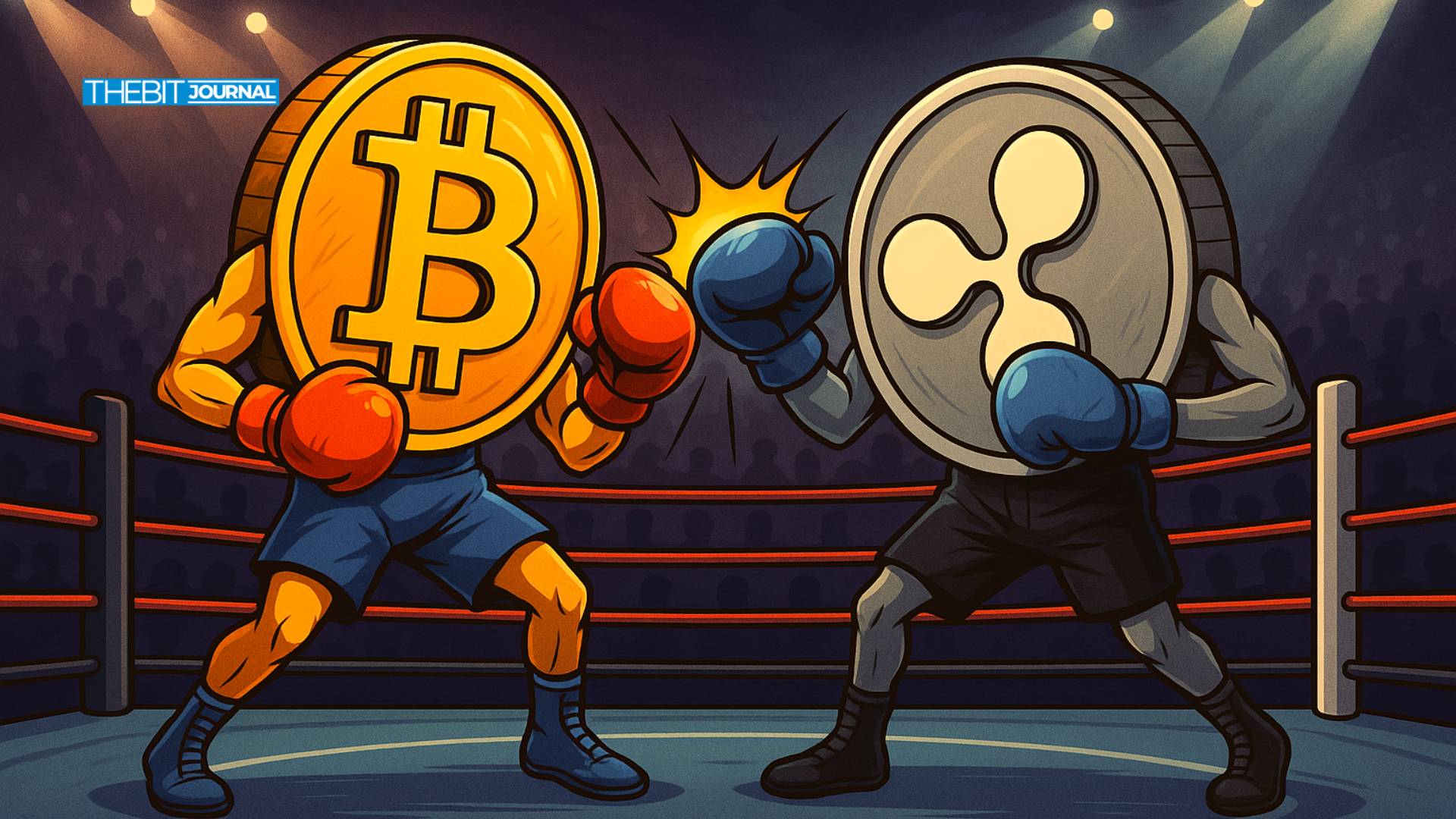XRP vs Bitcoin? Ripple CEO Says It’s No Contest
0
0

Ripple CEO Brad Garlinghouse has reignited excitement around XRP’s real-world utility, reaffirming the asset’s core strength in global payments: speed, scalability, and settlement efficiency.
In a recently shared video by XRP community member @XRP_Avengers, Garlinghouse emphasized XRP’s ability to move value in mere seconds, presenting a compelling alternative to traditional cross-border payment systems like SWIFT.
With growing institutional interest and rising on-chain activity, XRP’s potential as the future backbone of international payments is gaining credibility in both crypto and banking circles.
Ripple’s Vision: Solving Legacy Banking Challenges
In the video, Garlinghouse explained how the current correspondent banking model—where banks maintain pre-funded accounts in foreign jurisdictions—is costly, inefficient, and outdated.
To solve this, Ripple leverages XRP to source liquidity in real time, eliminating the need for dormant capital. XRP’s trading pairs with fiat currencies like USD and GBP provide the liquidity needed for instant settlement.
“What we enable is real-time value movement. Not in days. Not in hours. In seconds, globally,” Garlinghouse stated.
This approach drastically reduces the cost and time associated with legacy systems, making cross-border payments as seamless as sending a text.

XRP vs Bitcoin: Speed, Efficiency, and Scale
Garlinghouse didn’t shy away from comparisons to Bitcoin, pointing out XRP’s transaction superiority:
-
Bitcoin: ~12-minute transaction time
-
XRP: ~3 seconds
Ripple’s president, Monica Long, has even noted that XRP is “120,000 times more efficient than Bitcoin,” referencing both its speed and energy consumption.
This makes XRP far more scalable, cost-effective, and suited for real-time, high-frequency transactions—a crucial feature for banks, remittance providers, and financial institutions.
Real Utility in a Volatile Market
While many crypto assets remain speculative, Garlinghouse highlighted XRP’s practical utility:
-
Users interacting with Ripple-powered services often don’t even know XRP is being used.
-
From the consumer’s perspective, the result is simply faster service and better pricing.
“What the consumer sees is just a better product at a better price,” Garlinghouse explained.
This distinction—between speculative crypto and problem-solving digital assets—has been a central part of Ripple’s strategy to attract enterprise and institutional adoption.

Replacing SWIFT: Is Ripple Positioned to Win?
Ripple’s endgame, according to many analysts, is to replace or rival SWIFT, the 50-year-old messaging network used by over 11,000 financial institutions worldwide.
Garlinghouse has long stated that Ripple aims to move liquidity globally, instantly, and cost-efficiently, three things SWIFT currently struggles to offer.
Recent posts from XRP community leaders echo this optimism. Many believe that with the right regulatory clarity, Ripple is poised to capture a significant share of the global cross-border payments market, which SWIFT currently dominates.
XRP’s Momentum in 2025
XRP has shown steady signs of strength in 2025. Whale accumulation, increased transaction volumes, and growing partnerships across the Middle East, Asia, and Latin America suggest XRP’s utility is spreading beyond Western banking systems.
With legal clarity improving in the U.S. and the SEC lawsuit largely behind Ripple, market confidence in XRP’s future utility is recovering.
Conclusion
Brad Garlinghouse’s comments aren’t just hype, theya are a reflection of XRP’s evolving role in solving one of the financial system’s biggest inefficiencies: cross-border payments.
As banks, remittance companies, and fintechs seek alternatives to SWIFT, XRP offers a tested, scalable, and regulation-ready solution.
With lightning-fast transactions, minimal fees, and a growing global footprint, XRP is not just moving value in seconds—it’s moving closer to becoming the new standard for international payments.
FAQs
How fast is XRP compared to other cryptos?
XRP transactions take ~3 seconds, significantly faster than Bitcoin (~12 minutes) and Ethereum (~15 seconds under optimal conditions).
Can XRP replace SWIFT?
Ripple aims to offer a more efficient alternative to SWIFT by enabling instant cross-border settlements without pre-funded accounts.
Does the average user need to know about XRP?
No. Ripple’s technology is designed so that the user can benefit from speed and cost without needing to understand the blockchain backend.
Glossary
XRP: A digital asset used by Ripple to facilitate instant cross-border payments.
Ripple: A financial technology company focused on blockchain-based payment solutions.
SWIFT: A global messaging network used by banks to transfer payment instructions.
Pre-funded Accounts: Capital parked in foreign banks to facilitate currency conversions, often underutilized.
Sources
Read More: XRP vs Bitcoin? Ripple CEO Says It’s No Contest">XRP vs Bitcoin? Ripple CEO Says It’s No Contest
0
0
 Manage all your crypto, NFT and DeFi from one place
Manage all your crypto, NFT and DeFi from one placeSecurely connect the portfolio you’re using to start.








